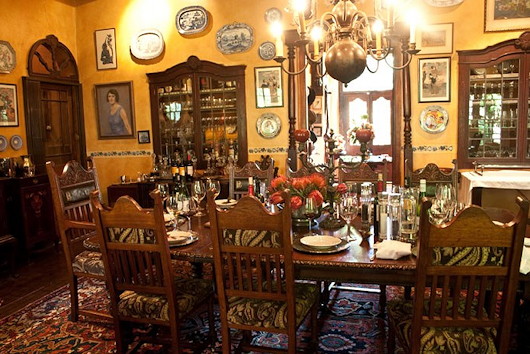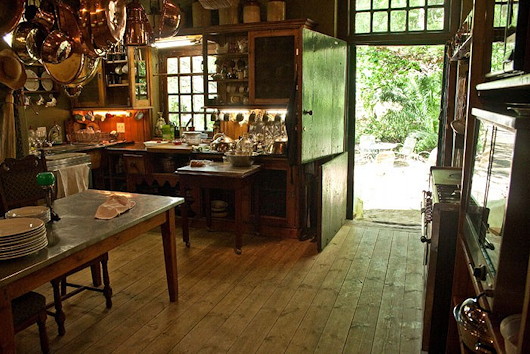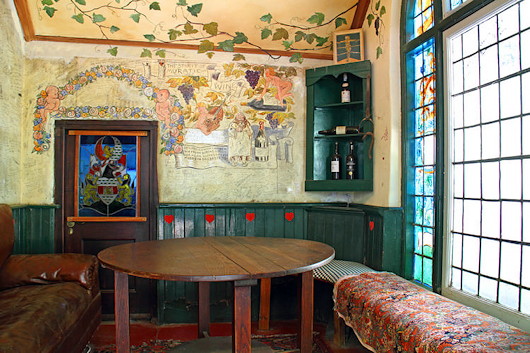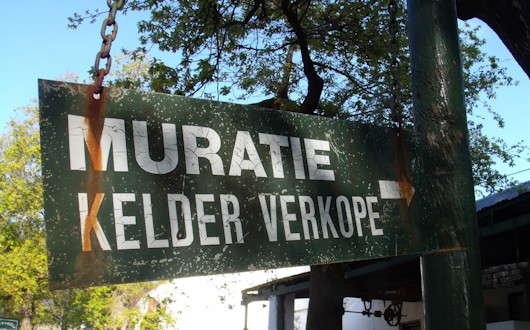South Africa
About Andrew Cusack
 Writer, web designer, etc.; born in New York; educated in Argentina, Scotland, and South Africa; now based in London.
Writer, web designer, etc.; born in New York; educated in Argentina, Scotland, and South Africa; now based in London. read more
News
Blogs
Reviews & Periodicals
Arts & Design
World
France
Mitteleuropa
Knickerbockers
Argentina
The Levant
Africa
Cape of Good Hope
Netherlands
Scandinavia
Québec
India
Muscovy
Germany
Academica
Colonel Moore
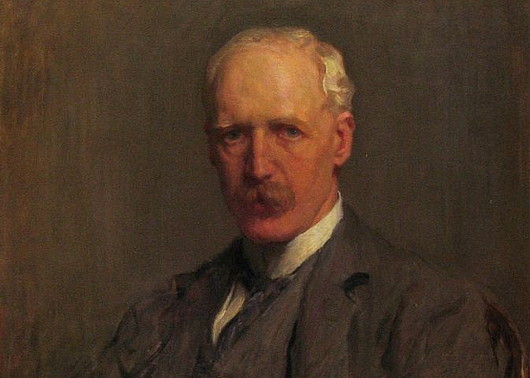
Senator Colonel Maurice George Moore, Companion of the Order of the Bath, is an understudied figure from that remarkable period of rapid transformation in Ireland’s political history. While certainly far from typical, Colonel Moore’s experience reflects the changing age rather well.
He was born in 1854 at Moore Hall in Co. Mayo where his family — English settlers who had converted to Catholicism — made their home. His father, George Henry Moore, was known as a kind landowner, and when his horse Coranna won the Chester Gold Cup during the height of the Great Famine, the £17,000 winnings were spent on giving each tenant a cow and importing thousands of tons of grain to relieve their hunger. During this dark period, not a single family was evicted from the Moore lands for non-payment of rent, and not a single Moore tenant died of hunger.
Younger son Maurice was educated locally before heading off to Sandhurst and was commissioned a lieutenant in the Connaught Rangers in 1874. The Ninth Xhosa War brought him to South Africa for the first time, also seeing action during the Anglo-Zulu War not much later. Promoted to captain in 1882 and major in 1893 it was the great Boer War (1899–1902) which transformed Moore’s entire world.
As a field commander Moore was highly regarded and proved himself capable at the Battles of Ladysmith, Colenso, Spioen Kop, and Vaal Krantz. His conduct in combat notwithstanding, Moore was appalled by the atrocities committed by his own side against the Boer civilian population — women and children herded into concentration camps where many starved to death while, just beyond the barbed-wire fences, British troops were exceptionally well provisioned. One wonders what effect the stories of the Great Hunger that took place just a few years before his own birth may have had on witnessing these horrible and frighteningly avoidable horrors.
With the Boers finally defeated, Moore ended up a colonel and was made a Companion of the Order of the Bath in honour of his achievements. In South Africa he became fluent in the Irish language having started to learn it from soldiers under his command. Back home in Ireland, Col Moore became active in promoting the study of Irish language and history, whether at evening schools on his family’s estates or in joining Conradh na Gaeilge and supporting compulsory Irish at the National University.
When Óglaigh na hÉireann — the Irish Volunteers (now Ireland’s defence force) — was founded in 1913 his military experience was judged useful and he was appointed to its provisional committee. He opposed Redmond’s takeover bid a year later but nonetheless followed him into the National Volunteers when the split did occur, the Redmondites putting themselves at the disposal of the British forces during the Great War. Colonel Moore’s final break with the constitutional nationalist leader came after the Easter Rising, and he joined Sinn Féin the following year. In 1918 his son Ulick was killed in action during the German’s spring offensive.
Given 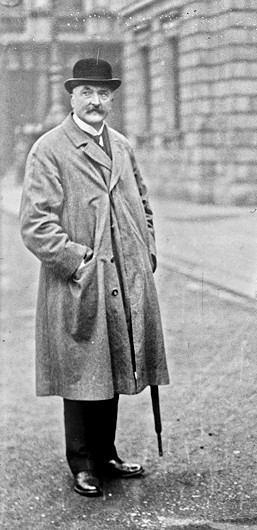 Col. Moore’s long experience in South Africa, Dail Éireann appointed him the secret Irish envoy to that country. With the creation of Seanad Éireann in 1922, Col. Moore was appointed a senator and began his legislative career which continued the entirety of the Free State Senate’s existence.
Col. Moore’s long experience in South Africa, Dail Éireann appointed him the secret Irish envoy to that country. With the creation of Seanad Éireann in 1922, Col. Moore was appointed a senator and began his legislative career which continued the entirety of the Free State Senate’s existence.
Starting out in Cosgrave’s ruling Cumann na nGaedheal party, Senator Moore quickly began to oppose the government policy. The Boundary Agreement late in 1925 provoked his defection to the new Clann Éireann (or People’s Party) when it was founded early on in 1926. Just two months later, in March 1926, de Valera founded Fianna Fáil which took on what little momentum Clann Éireann had. Once Dev’s efforts proved their worth at the ballot box in 1928, with voters electing eight Fianna Fáil senators, Col Moore sat with the party in Leinster House.
In 1932, the voters put Fianna Fáil in power for the first of many times and de Valera began his reshaping of the Irish state, culminating in the 1937 Constitution of Ireland that has stood the test of time. Significantly, Ireland is the only successor state to have emerged from the First World War to have preserved its constitutional democracy, and much of this is due to Dev’s instinctive conservative republicanism. When the Constitution came into effect in 1937, An Taoiseach appointed Col Moore to the newly constituted Seanad, and he continued to serve as a Senator up until his death in 1939.
Sir Christoffel Brand
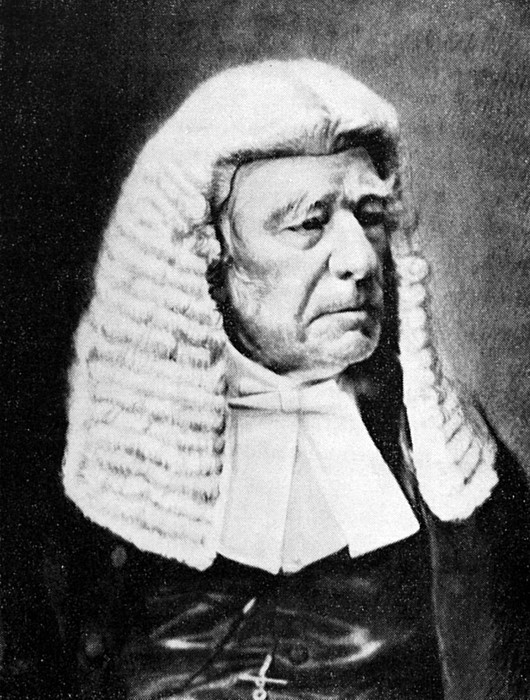
Look at that cragly visage! It belongs to Sir Christoffel Brand, the first Speaker of the House of Assembly in the Cape Parliament.
Brand was born in Cape Town in 1797 and left for the Netherlands in 1815, where he studied at Leiden. In 1820 he was awarded a doctorate in law based on his dissertation Dissertatio politico-juridica de jure coloniarum on the legal relationship between colonies and the metropole, and returned to the Cape. (more…)
Muratie
The Stellenbosch estate of the artist Georg Paul Canitz
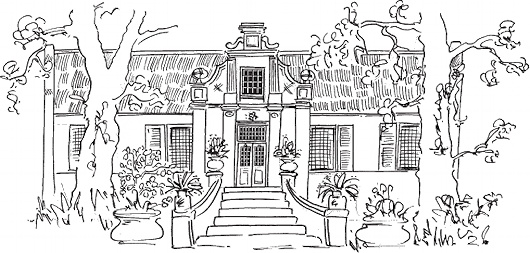
We had supper with Mr. Canitz, the painter, one Sunday night, by the light of candles in a fine Dutch candelabra, and drove back to Stellenbosch in moon light which had transformed the countryside into the most entrancing fairyland imaginable.
Great clumps of trees in unexpected places gave an eeriness to the white ribbon of road which stretched across the valley. The soft evening breeze of magic scents lulled us, and we drowsed to the hum of the car bearing us homeward.
That memory is still vivid to me so I shall turn from our Golden Road, and “…muse awhile, entoil’d in woofed phantasies.”
So the architect Rex Martienssen described a visit to Muratie, the home of the artist Georg Paul Canitz, in 1928. Canitz was a Saxon, born in Leipzig, where his parents had hoped he would pursue a military career. Both his zeal and talent as an artist appeared early on, and so he ended up at the Dresden Academy of Fine Arts. After further studies in Italy, Paris, and the Netherlands, a chest ailment drove him to the interior of Südwestafrika in 1907.
Canitz healed quickly in the dry air but could not find a cure for the striking beauty of the new world around him. His wife and children were summoned from Germany, and three years later he moved to Stellenbosch after falling in love with the “City of Oaks”.
Canitz devoted himself to his passions: riding, painting, and teaching (both at his own art school and at the University). Riding to a party at Knorhoek one day he stumbled upon the little house and farm at Muratie and was quickly enamored of the place. It wasn’t long before he had purchased it and moved his family there.
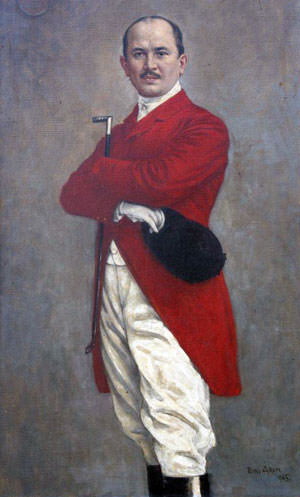
G P Canitz
At Muratie, the painter developed a further art: that of winemaking. In this he was assisted by the legendary Dr Perold — first chair of viticulture at Stellenbosch. Canitz became a pioneer of the pinot noir grapes which have since become a South African staple. Perhaps even more he developed the skills of a kind and generous host, for which he was well reputed throughout South Africa. He would welcome friends and guests — among them Martienssen and his architectural students as cited above — throughout the year. In warmer months they came for the swimming pool and the breezy stoep, while in winter a fire awaited, or perhaps a few rounds of strong drink in the Kneipzimmer.
I like to think this was Canitz’s favourite room at Muratie: bedecked with benches, the light streaming in through a stained-glass windows, and the walls covered in naturalistic painting as well as graffitied signatures and sayings in German, Afrikaans, French, and Greek.
The painter died in 1958, leaving Muratie to his daughter, who in 1987 sold it to members of the Melck family who had owned it from 1763 to 1897. (The house was first built in 1685.) I suspect Canitz would have greatly appreciated his handiwork being passed back to those who had looked after the place for many generations before him. The Melcks, unsurprisingly, have a great reverance for the history of the estate. They even go so far as to leave the cobwebs which have accrued go undisturbed and ask visitors to do likewise.
And, even today, the wine still flows!
Arms of the Oudtshoorn Oratory
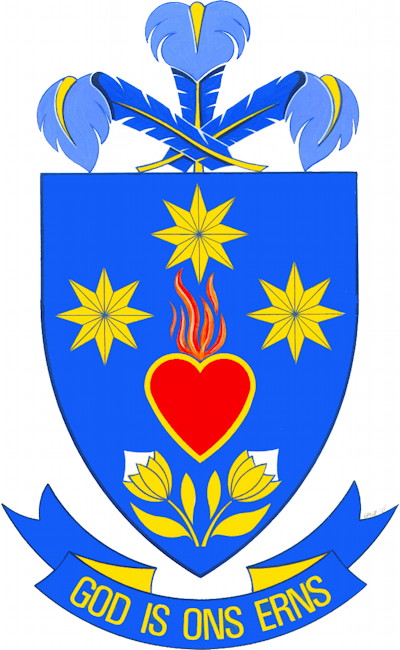
An explanation of the arms of the Afrikaans-speaking Oratory of St Philip Neri in Oudtshoorn, South Africa (edited from their own information).
Party in the Overberg
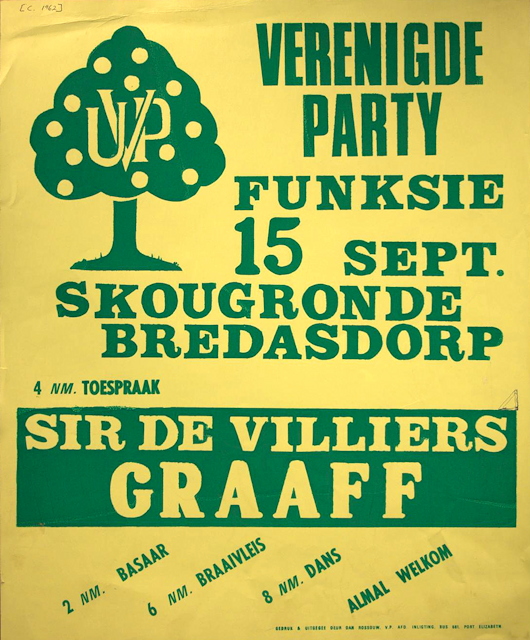
Alongside a bazaar, a braai, and dancing, a speech by Sir De Villiers Graaff is the selling point of this poster advertising a United Party (Verenigde Party) get-together in the beautiful Overberg region of the Cape.
“Sir Div” was the inheritor of one of only twelve South African baronetcies and led his party from 1956 until 1977 when it merged with the Democratic Party of verligte ex-Nationalists to form a new entity.
The broadly centrist party had lost power to the republican Nats (creators of apartheid) in 1948, and suffered splits that led to the creation of the Liberal Party and the United Federal Party in 1953, the National Conservative Party in 1954, and the Progressive Party in 1959.
The party’s emblem was a happy little citrus tree.
The Old Cannon Brewery
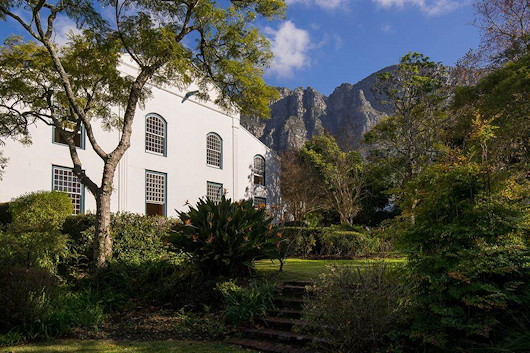
Robert Gwelo Goodman is one of my favourite South African artists whom you might recall when I introduced you to one of his paintings of the Groote Kerk in Cape Town. It’s not surprising that he lived in a unique dwelling — an old brewery in the verdant Cape Town suburb of Newlands, nestled as it is in the nape of Table Mountain.
Now Gwelo’s old brewery is up for grabs. (more…)
Die Ou Swaai Pomp
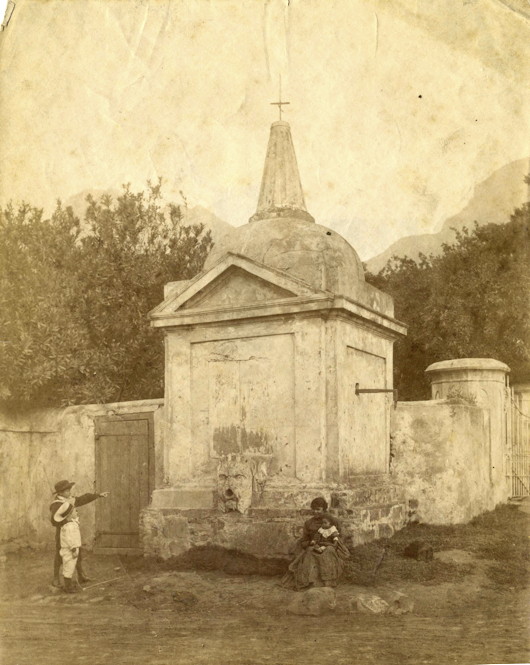
The old water pump at the corner of Prince Street and Sir George Grey Street in the Cape Town neighbourhood of Oranjezicht was part of the system created by the Swede Jan Frederik Hurling in the 1790s for his farm, Zorgfliet. This particular structure was erected at the pump site in 1812 to a design by Louis Michel Thibault, embellished with a water-sprite gargoyle attributed (inevitably) to Anton Anreith.
It was operated by swinging the wooden handle on the side to and fro, hence why it is known as a swaai, or “swinging”, pump.
The photo above is the work of the Cape photographer Arthur Elliott whose work not only documents the early architecture of the Cape but more often than not manages to do so in an artistic and evocative manner.
Elliott is especially valuable considering how many of these structures faced the wrecking ball in the intervening century since he took his photographs, though — as you can see from a Google StreetView capture below — the Old Swaai Pump is still in its place today and is a monument protected by national and provincial law.
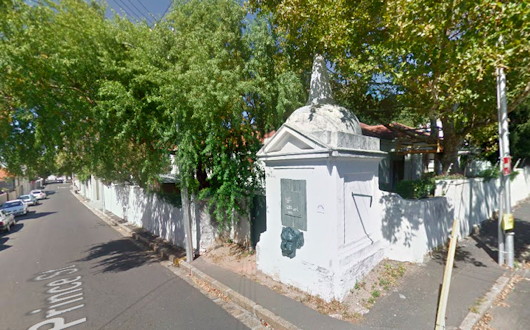
Suid-Afrika
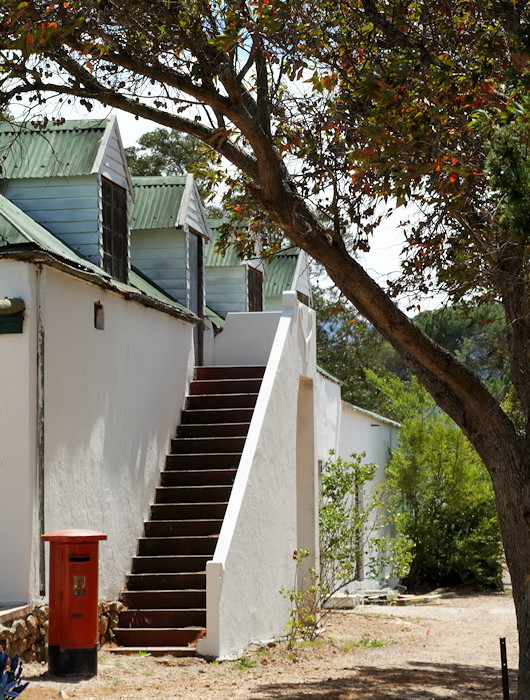
Suid-Afrika — ’n kleine bietjie van Hemel.
Smuts at Leiden
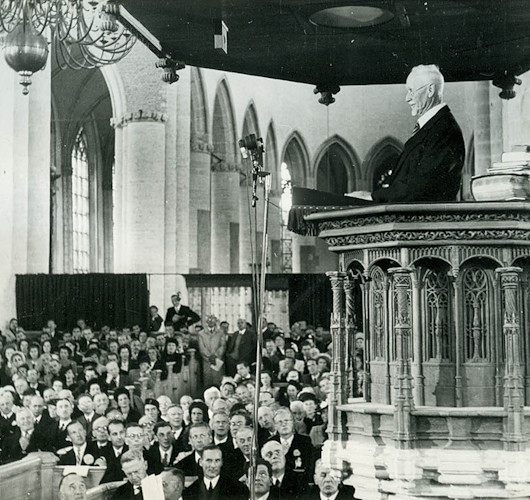
For quite some time, Leuven — in what is currently known as Belgium — was the only university in the Netherlands. It is still (barely, some argue) a Catholic university, and after the Protestant revolt sealed its rule over the northern part of the Dutch realms, William the Silent founded a university at Leiden as a Calvinist academy in 1575.
Leiden University has had strong links with South Africa from the earliest days. Ds. Johannes de Vooght — in the 1660s, the second leraar of Cape Town’s Dutch Reformed congregation — studied here, as did numerous predikante of that period and onwards, including Ds. Petrus van der Spuy, the first NGK minister to be born in South Africa.
South African politicians studied here aplenty: Sir Christoffel Brand (first Speaker of the Cape Parliament); Jan Brand (fourth president of the Orange Free State); Marthinus Steyn (sixth and final president of the O.F.S.); and Nicolaas Diederichs (third staatspresident of the Republic of South Africa).
Probably the first South African to be granted an honorary degree by Leiden (c. 1830) was Antoine Changuion, the founder of the Dutch language movement which advocated preserving Dutch as the cultural language of the Afrikaners against the emerging Afrikaans.
It was in 1948 that Leiden granted the greatest Afrikaner — Field Marshal Smuts — a Doctorate of Law honoris causa. Smuts was on his way back from Cambridge where he had been granted the honour of being installed as Chancellor of the University. Even Die Burger, a Nationalist paper opposed to his Verenigde party, found the event worthy of a caustic near-compliment:
“We may differ from him on many issues, but the honour which he has won for the Afrikaner does not leave us untouched.”
Keeromstraat 14
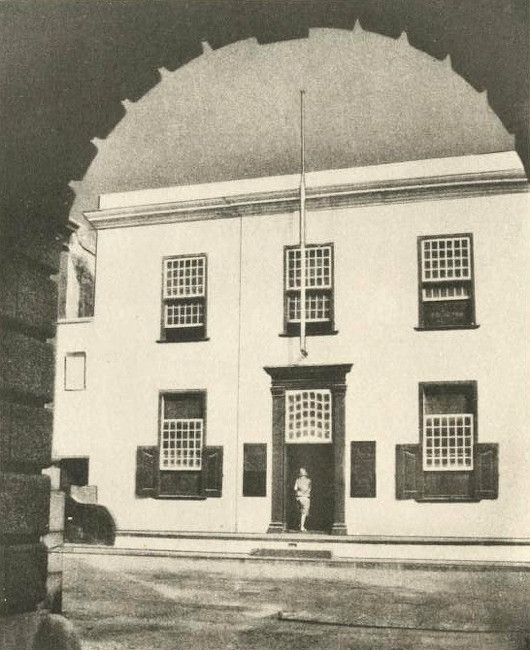
Keeromstraat 14, Kaapstad
This Cape Town house was built in 1751 for Hermanus Smuts who sold it on to Johan Jacobus Graaff, the woodworker who collaborated with South Africa’s greatest architectural duo, the sculptor Anton Anreith and the architect Louis Michel Thibault.
Thibault is believed to be responsible for the addition of the upper story and the current façade, seen above through an archway of the High Court.
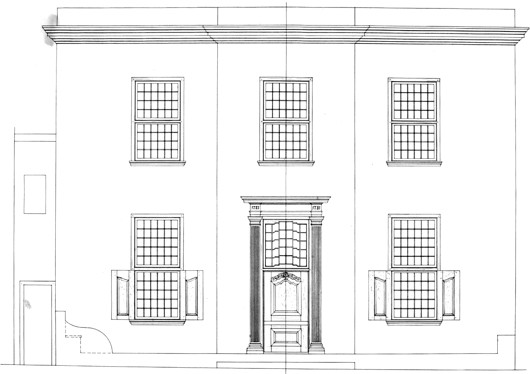
The building next door was designed by the pioneering Afrikaner architect Wynand Hendrik Louw (1883-1967) for De Nederlandsche Club te Kaapstad, the city’s club for Dutch businessmen and expatriates. Louw was also the architect of the Dutch Reformed Church at Napier in the beautiful Overberg.
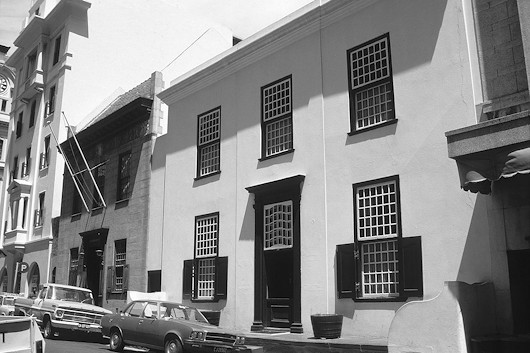
Alles Sal Reg Kom
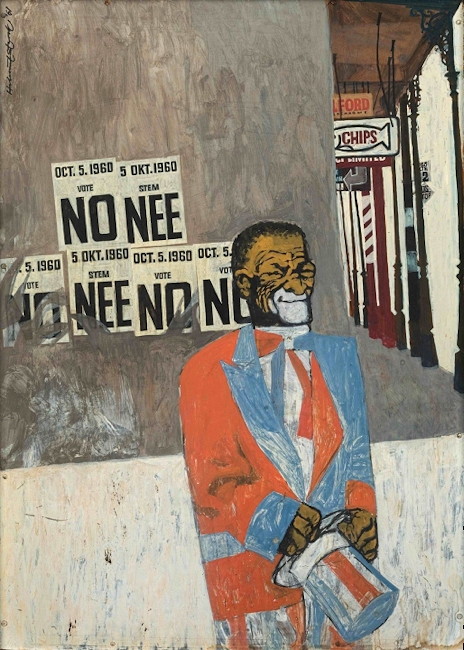
1961; Acrylic on board, 34.8 in. x 24.8 in.
A man festively attired in a Tweede Nuwejaar outfit in patriotic colours (orange, white, and blue) stands in front of a side wall in Cape Town bearing monarchist posters urging voters to vote ‘No’ in the 1960 republic referendum.
The painting’s title – Alles Sal Reg Kom – means “everything will be alright”.
Die Staatsrede
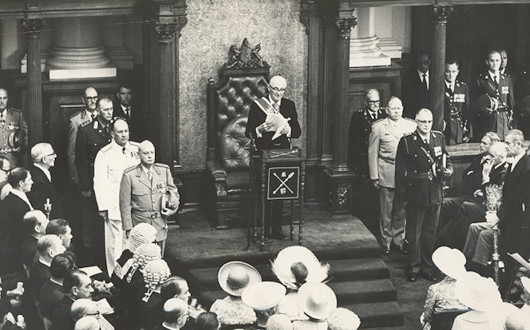
Staatspresident Jacobus Johannes Fouché giving the staatsrede from the throne of the Senate within the Houses of Parliament in Cape Town.
What is now the State of the Nation Address has its origins in the speech from the throne (in Afrikaans staatsrede meaning “state reasoning/rationale”) setting out the Government’s legislative programme for the year. The high point of the State Opening of Parliament, it was originally given by the Governor-General (or, in 1947, by the King of South Africa himself) but with the abolition of the monarchy in 1961 the sovereign’s vice-regal representative was abolished and replaced by the Staatspresident as chief officer of the South African state.
Giving a speech from an actual throne was considered too monarchic for a republican polity, so – like in the Boer republics of old – presidents gave their staatsredes standing. Here, State-President Fouché is flanked by the chiefs of the defence staff and police, the Serjeant-at-Arms with the mace, and the Gentleman Usher of the Black Rod.
Of course, much of this was abolished in the 1980s with the constitutional innovations as a last-ditch attempt to entrench apartheid. South Africa is now on its third constitution since the above photo was taken.
It reminds me of how in Ireland almost all the traditions of the Viceroy (viz. the Viceregal Guard of Battleaxes, etc.) were abolished not by the Saorstát or Éire but by the British themselves – in their case by penny-pinching Victorians who found Dublin an easy target for cost-cutting.
Interior of the Groote Kerk
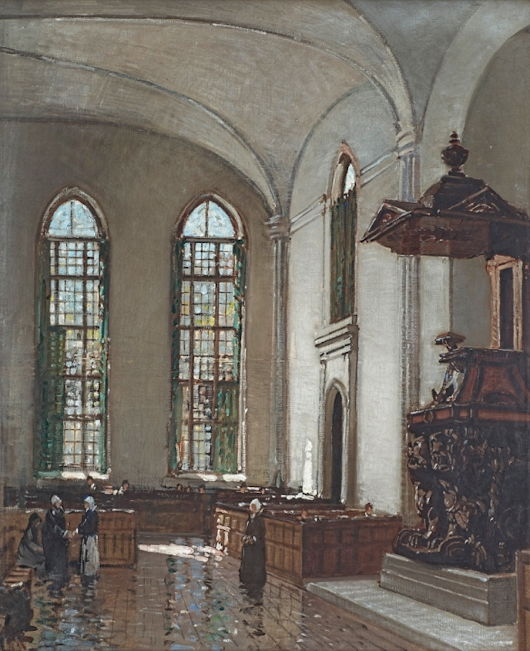
1916; Oil on canvas, 29½ in. x 24½ in.
Though the painting is just a hundred years old, Gwelo Goodman depicted the scene as if in the late seventeenth century — when the Groote Kerk was first built.
While the body of the church was replaced in the 1840s, the elders of this most senior Nederduits Gereformeerde gemeente wisely kept the stunning baroque pulpit, the work of the Cape’s greatest sculptor Anton Anreith.
Open-minded Stellenbosch
Paul Moorcraft is a Cardiff-born journalist and academic who spent many years in southern Africa, lecturing, researching, and working. I stumbled across this passage about Stellenbosch from his 2011 book Inside the Danger Zones: Travels to Arresting Places and found it interesting (though not surprising):
I found many of my all-white students at the University of Cape Town tediously dogmatic in their supposed progressiveness. I also lectured at the Afrikaans-language university of ‘Maties’ at Stellenbosch, established in 1918 [sic, f. 1866; accorded university status in 1918] as the Afrikaner Oxbridge, where I found the students much more open-minded. Simon van der Stel, a stiff Dutch bureaucrat, founded a frontier town on the banks of the Eerste River in 1679. Van der Stel loved oaks, and the graceful boulevards he planted still adorned picturesque Stellenbosch. I spent as much time as possible in the area because of the architecture. The Cape Dutch style contains elements from Dutch architecture but is also influenced by colonial Indonesian traditions and the local environment. The most characteristic feature is the graceful gabled section built around the front door, which is flanked by symmetrical wings, thatched and whitewashed, extending on either side.
I was supposed to be using my visiting lectureship to finish my doctoral research, so I became friendly with Retha, a librarian at Maties. She was a fund of knowledge on Afrikaner culture and offered herself as an intellectual guide. My scholarly investigations soon degenerated into a three-month tour of the local wine farms, for which I am eternally grateful. We drove through the old, beautiful vineyards of the valleys around Paarl, Franschoek, and Tulbagh; then returned to eat in splendid eighteenth-century farmhouses converted to hotels.
Kerkplein, Pretoria
Gauteng, the province which forms the highly urbanised heart of the old Transvaal, is not my area of specialty in South Africa, enamoured as I am of the Western Cape. Johannesburg, for all its financial prowess, is one of those towns that went from a collection of tents to a major city almost overnight with the Witwatersrand gold boom.
Pretoria, on the other hand — Pretoria Philadelphia to give its original name — exudes a more detached respectability perhaps enlivened by the ceremony of its century-long status as the executive capital of a unified South Africa. And sitting at the heart of the city of jacarandas is Kerkplein — Church Square. (more…)
Shedding light on the Cape Baroque
Nuwe lig op die Kaapse barok deur Dr Hans Fransen
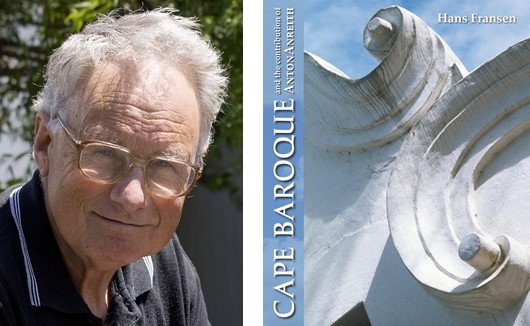
A NEW BOOK BY Dr Hans Fransen, the leading authority on Cape Dutch architecture, intends to shed new light on the Cape Baroque style through an examination of the work of the sculptor Anton Anreith. Cape Baroque and the contribution of Anton Anreith offers us the hefty subtitle of ‘A stylistic survey of architectural decoration and the applied arts at the Cape of Good Hope 1652-1800’, covering the period of the Dutch East India Company’s rule at the Cape.
The author investigates (says the publisher’s note) whether, and to what extent, the surprisingly rich body of Cape material culture can be seen as part and parcel of the international Baroque: that ebullient style of painting, architecture, and design that swept across Europe and some of its spheres of influence. After a highly interesting account of the origins of the Baroque in Italy and of its development in other parts of the world, the author concludes that ‘Cape Baroque’ does indeed form part of this. But he also points out that it has a very distinctive character of its own.
The book of 180 pages contains over 200 illustrations, mostly from the author himself, whose other works include The Old Towns and Villages of the Cape, The Old Buildings of the Cape, Drie Eeue Kuns in Suid-Afrika, and the introduction to A Cape Camera, the book illustrating the photography of early Cape photographer Arthur Elliott.
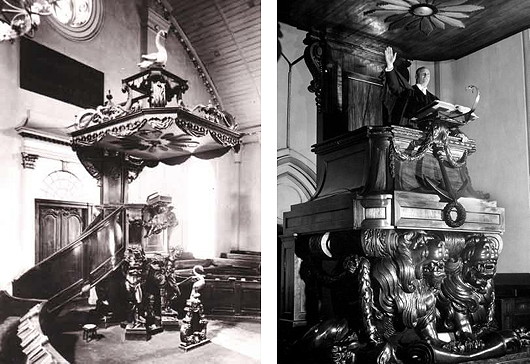
The sculptor Anreith, born in Germany at Riegel between the Rhine and the foothills of the Black Forest, was the finest and most florid artist of the Baroque in the Cape of Good Hope. His exceptional work on the pulpit of the Lutheran Church in Cape Town provoked the envy of the more prominent Dutch Reformed congregation, who quickly commissioned Anreith to carve an even more ornate pulpit for the Groote Kerk.
by Dr Hans Fransen, 160 pages, R250
deur Dr Hans Fransen, 160 bladsye, R250
Two Flags Based on the French Tricolour
The French tricolour is one of the most influential flags in history, inspiring most prominently perhaps the Italian and Irish flags, but also dozens other, including the nationalist triband flags (like those of Germany, Russia, etc.). Indeed, the national flags of nearly sixty UN member states are based on these vertical or horizontal stripe combinations.
While long identified with revolution, republicanism, and nationalism, the French flag originally represented a combination of the blue and red of Paris — the colours of Saint Martin and Saint Denis — with the white of the French monarchy. Two (non-national) flags based directly on the French tricolour are those of the Acadians in North America and of Franschhoek in South Africa. (more…)
A Lecture by Andrew Cusack
College of Arms Foundation
and the
Committee on Heraldry
of the New York Genealogical & Biographical Society
cordially invite you to a talk by
ANDREW CUSACK
on

‘THREE ANNULETS OR’
THE VAN RIEBEECK ARMS
& THEIR SOUTH AFRICAN LEGACY
Tuesday 17 September 2013
at
6:00 PM
Reception to follow
New York Genealogical & Biographical Society
36 West 44th Street, 7th Floor
New York, NY 10036
Open to the public. No charge.
Please rsvp to rsvp@coaf.us to reserve a place.
As the founder of the oldest European settlement in southern Africa, he came to be seen as the father of South Africa after the country was unified in 1910. The central elements of his arms — three annulets or — obtained local, regional, and finally national significance, and influenced the design of a wide variety of South African coats of arms, many of which will be examined in this lecture.
University Nicknames in South Africa
In the course of reading any South African newspaper article about universities, the unacquainted reader may be confused by some of the terminology involved. “Maties Slaughter Ikeys” is a common enough headline prototype — given that, I think, the last time the Ikeys (University of Cape Town) beat Maties (Stellenbosch) in rugby, a white man was president.
What are these mystical nicknames for South Africa’s universities, clouded in mystery to the outsider? Here is a handy guide. (more…)
The Impetuosity of Youth
From the Flickr feed of South Africa’s Etienne du Plessis:
These pictures were taken 2 October 1964: I was the pilot [writes Quentin Mouton]. The pictures are original and not ‘touched up’. The ‘Pongos’ (Army types) were on a route march from Langebaan by the sea to Saldanha. The previous night in the pub one of them had said: “Julle dink julle kan laag vlieg maar julle sal my nooit laat lê nie!” (You think you can fly low, but you will never make me hit the deck). Hullo!!!
I went to look for them on the beach in the morning and was alone for the one picture. I was pulling up to avoid them. In the afternoon I had a formation with me and you can see the other a/c behind me. (piloted by van Zyl, Kempen, and Perold).
A friend by the name of Leon Schnetler (one of the pongos) took the pics. The guy that said “Jy sal my nie laat lê nie!” said afterwards that he was saying to himself as I approached: “Ek sal nie lê nie, ek sal nie lê nie” (I wont go down, I wont go down) and when I had passed he found himself flat on the ground.
Memories from the past.
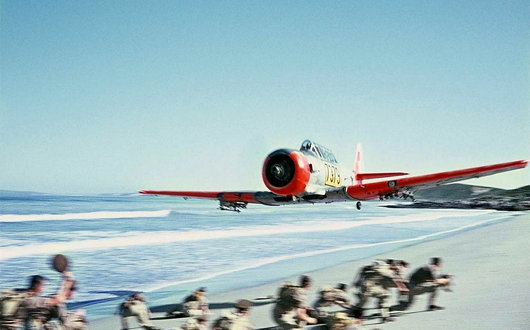
Search
Instagram: @andcusack
Click here for my Instagram photos.Most Recent Posts
- The last of its vintage May 15, 2024
- Letters Patent May 8, 2024
- Bicycle Rack April 29, 2024
- Burns Tower April 19, 2024
- Patrick in Parliament March 18, 2024
Most Recent Comments
Book Wishlist
Monthly Archives
Categories


